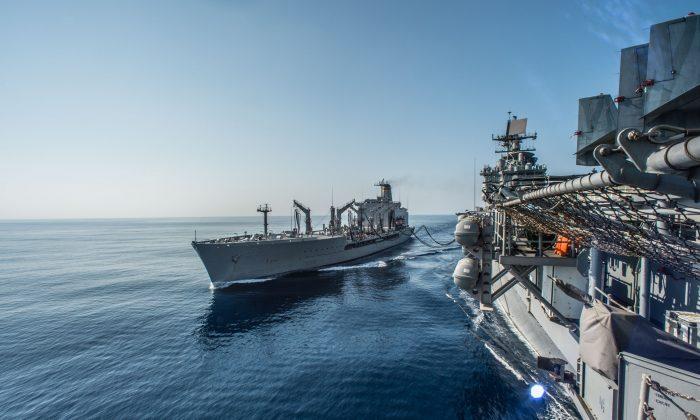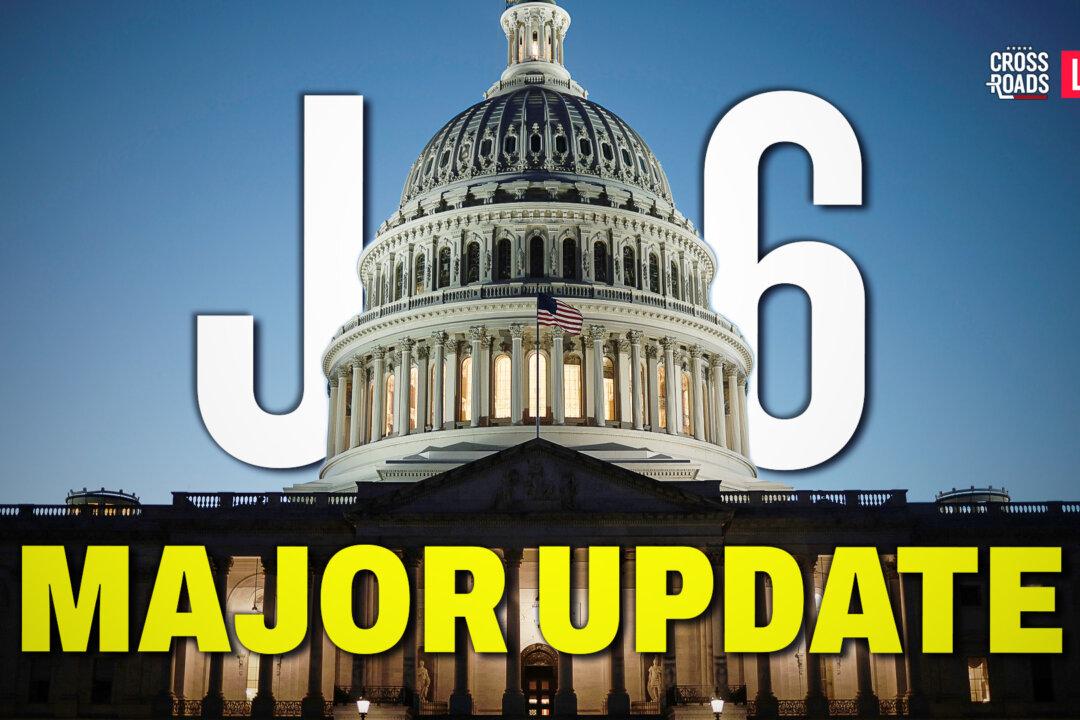A new deal with the Philippines gives the United States the ability to begin deploying troops to two military bases near the contested Spratly Islands in the South China Sea. The new bilateral defense agreement between the United States and the Philippines gives U.S. forces access to at least eight military bases identified for troop rotation.
The agreement comes on the heels of the 26th ASEAN Summit in Malaysia, after which the 10-member Association of Southeast Nations (ASEAN) issued a statement citing “serious concerns” over the Chinese regime’s aggression in the South China Sea, and called for “self-restraint in the conduct of activities.”
Tensions have been growing over the Spratly Islands, in particular. They are close to 1,000 miles south of China’s southernmost point in Hainan, yet the Chinese regime is building new islands and constructing military bases in the region.
The disputed Spratly Islands are claimed by the Chinese regime, Taiwan, Vietnam, Malaysia, Brunei, and the Philippines, but tensions have mainly been around the Chinese regime’s claims to the region.
According to Stars and Stripes, the ASEAN statement says the land reclamation in the South China Sea has “eroded trust and confidence and may undermine peace, security and stability.”
The newly announced agreement between the United States and the Philippines will bolster the presence of U.S. forces in the region. Armed forces chief of staff Gregorio Catapang recently told Manila’s ABS-CBN News about the agreement, which was negotiated in October. He said U.S. Pacific Command chief Adm. Samuel Locklear identified eight bases in the Philippines, and the United States would begin rotating troops through them.
Among the bases are the Antonio Bautista Air Base and Naval Station Carlito Cunanan in Palawan which, according to Stars and Stripes, “would give the U.S. rapid access to the Spratly Islands.”
The agreement wasn’t the only penned by the United States and an Asia-Pacific ally. Also following the ASEAN Summit, during the 2+2 talks in New York City on April 27, the United States and Japan announced new defensive guidelines.
The new guidelines will allow Japan to deploy troops to support U.S. operations, without needing legislation, according to a report from intelligence company IHS Jane’s.
“This marks the first revision in the ‘Guidelines for US-Japan Defense Cooperation’ since 1997 and accounts for Japan’s increasing interest in expanding its military’s use,” it states, “largely as a counterweight to China’s rising military power.”
U.S. officials said their commitment to Japan’s security remains “iron clad,” according to Reuters. They reiterated that this commitment includes all of Japan’s territories, including the Senkaku Islands in the East China Sea, which are also claimed by China.
Japan will be able to cooperate with the U.S. military globally, in areas including ballistic missile defense, cyberspace, space, and maritime security. Reuters notes that last year, Japan’s Cabinet reinterpreted its post-world war two pacifist constitution, and resolutions this year allow Japan the right to “collective defense.”
“The guidelines will enhance Japan’s security, deter threats, and contribute to regional peace and stability,” said Secretary of State John Kerry, according to the Pentagon’s DoD News.
While Kerry avoided mentioning China by name, he directly addressed some of the Chinese regime’s key threats in the region—particularly it’s creation of an air defense zone over the East China Sea that is unrecognized by other nations.
“The United States and Japan stand together in calling for disputes in the region to be resolved peacefully,” Kerry said. “We reject any suggestion that freedom of navigation, overflight, and other lawful uses of the sea and airspace are privileges granted by big states to small ones.”


![[LIVE 4/26 at 10:30AM ET] New Push Started for Global Digital Currencies](/_next/image?url=https%3A%2F%2Fimg.theepochtimes.com%2Fassets%2Fuploads%2F2024%2F04%2F19%2Fid5633115-0426-1080x720.jpg&w=1200&q=75)



Friends Read Free